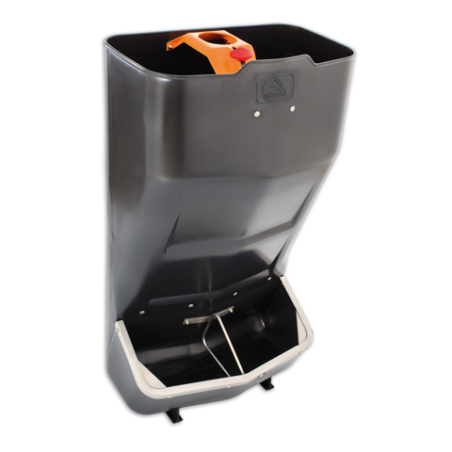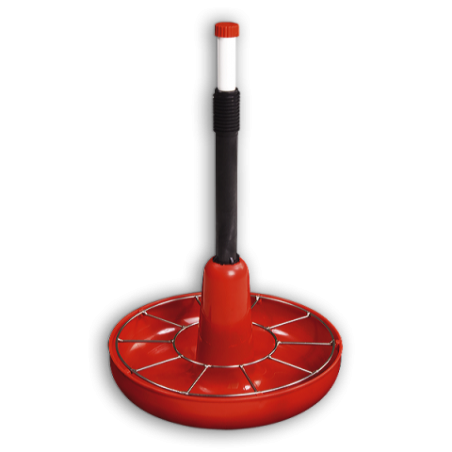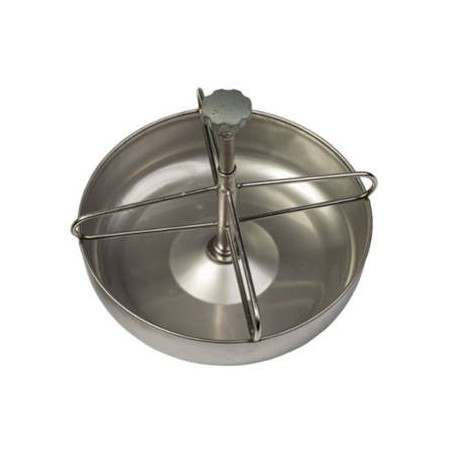Commented article
Strategies to improve the growth and homogeneity of growing-finishing pigs: feeder space and feeding management. López-Vergé, S., Gasa, J., Temple, D., Bonet, J., Coma; J. and D. Solà-Oriol. Porcine Health Management (2018) 4:14, https://doi.org/10.1186/s40813-018-0090-9
Read the abstract

Comment
A very present-day problem, especially in companies that use a multi site production system, is the large variability in liveweight in the group or production batch at the end of the fattening period. On the one hand, it reduces the global efficiency of the fattening unit and on the other hand it delays the complete emptying of the fattening buildings, thereby reducing the number of pigs fattened per space and year.
The article shows two aspects of management during the fattening stage that can modify the performance of the group and help to reduce the liveweight variability at the end of this stage: on the one hand the number of pigs per feed opening (or feeder space), and on the other one the direct intervention on the feeding program.
Feeder space
It is well known that the number of pigs per feeder space rises as the pigs' age and liveweight increases. The results of the experiment show, without being conclusive, that an excess of animals per feeder space can condition both the production results and the final liveweight variability, although they also suggest that it should not be a very important factor, because the tested range is wide (between 2.5 and 5.5 pigs per feed opening), and the response in terms of variability reduction is modest. Also, an excessively low relationship can probably coincide with a greater feed wastage and a worsening of the feed conversion ratio, that has not been measured in this study.
Direct intervention on the feeding program
In the second experiment, the pigs were distributed in groups according to their weight at the beginning of the fattening stage (high or low). By using a feeding program with four feeds, half of the light pigs (Lp) groups were fed like the heavy pigs (changing their feed on a fixed day), and the other half were fed using a “budget approach” (the next feed is provided when the previous feed has run out. In practice, these piglets consume the same amount of the first feed than the heavy pigs, but for more days). Although feeding the light pigs with a “budget approach” requires segregating them in different buildings to those of the heavy pigs or having a double feed distribution system in the same building, the results are clearly positive, they need less days to reach their slaughter weight and they reduce their slaughter liveweight variability, but they complicate management or require a certain investment.
Conclusions and practical implications
In the end, the two measures studied, when used togheter, would allow to reduce the slaughter liveweight variability by 10-15% (equivalent to 1.0-1.5 percentage points of the coefficient of variation). Actions carried out during the periods prior to the fattening stage could undoubtedly cause greater reductions, specially if we focus on the liveweight variability at birth and at weaning.
In practice, the feeding systems have evolved in the last years, and the emergence of hyperprolificacy and animal welfare laws have undoubtedly forced the remodelling of the sows' facilities. On the other hand, the prohibition of growth-promoting antibiotics has changed the picture of feeding in the nurseries. On the contrary, in many cases we still have the same old fattening buildings, and the new ones are normally built like those of the 20th century. Studies like this one would encourage the reassessment of the fattening buildings and betting on new ways of feeding during the fattening stage: phase feeding, liquid feeding or even precision feeding can be good options. Anyhow, any change and/or investment requires a previous cost-benefit study.
Abstract of the commented articleStrategies to improve the growth and homogeneity of growing-finishing pigs: feeder space and feeding management. López-Vergé, S., Gasa, J., Temple, D., Bonet, J., Coma; J. and D. Solà-Oriol. Porcine Health Management (2018) 4:14, https://doi.org/10.1186/s40813-018-0090-9 Background and methods: The aim was to test two strategies for improving the growth rate of the slow-growth pigs and to increase the batch’s homogeneity at slaughter. In Trial 1 a total of 264 weaned piglets were distributed into 24 pens (11 piglets/pen) according to sex and initial body weight (BW) for the nursery period (N; day 28 to day 64). During the N period, a commercial lidded feeder hopper was used (3.7 pigs/feeder space). When moving to the growing facilities, the 24 pens were maintained and split into two groups of 12 according to sex and feeder type (HD or 5.5 pigs/feeder space and LD or 2.2 pigs/feeder space). In Trial 2 a total of 1,067 piglets were used and classified, when leaving the nursery at 63 days of age, as Heavy (Hp, n = 524) and Light (Lp, n = 543) pigs. Along the growing period, Hp and half of the Lp pigs were fed with four consecutive feeds, following a standard feeding program (Std). Alternatively, the other half of the Lp pigs were fed according to a budget approach, changing the first three feeds on the basis of an equivalent feed consumption instead of age (Sp).  Results: In Trial 1, higher BW (80.2 kg vs. 82.1 kg; P = 0.02), ADG (704 g/d vs. 725 g/d; P = 0.02) and lower number of lesions were observed for pigs raised with the LD treatment, compared to the HD treatment at day 154 (P < 0.05). The CV of the final BW was numerically lower for the LD treatment. In Trial 2, higher BW and ADG and lower CV were observed for the LSp pigs from day 83 to day 163 (P < 0.001) of age compared to LStd. Moreover, an interaction observed for carcass weight at slaughter (P = 0.016) showed that the Sp pigs had a higher carcass weight than the Std pigs, and the difference increased as the emptying of the barn facility advanced. Conclusion: It is concluded that the feeder space and feeding management may affect the growth of growing-finishing pigs and liveweight homogeneity at the end of the period. |








